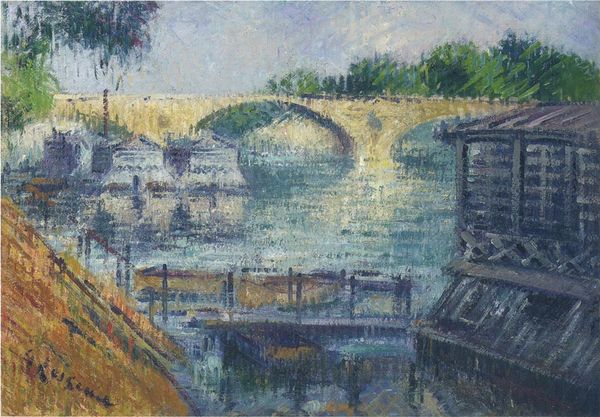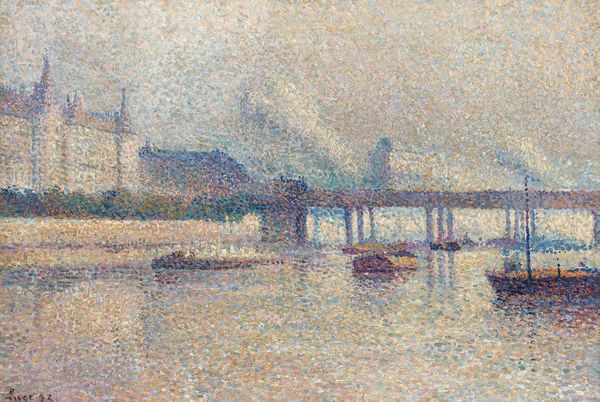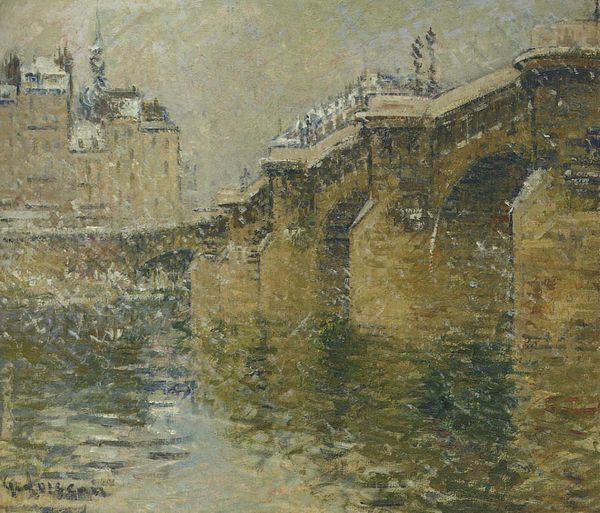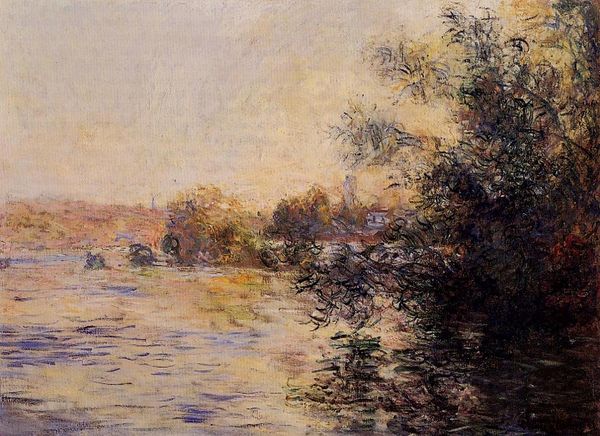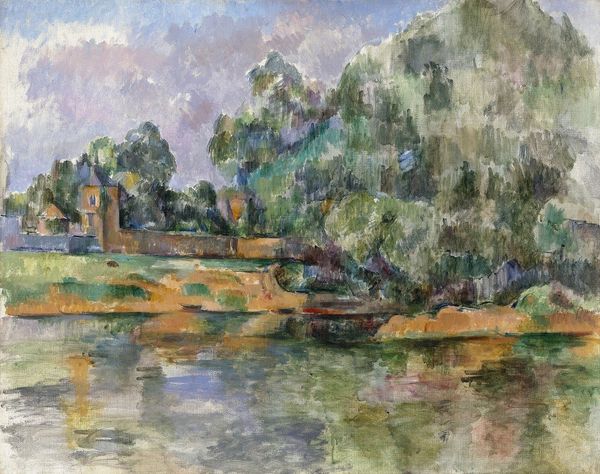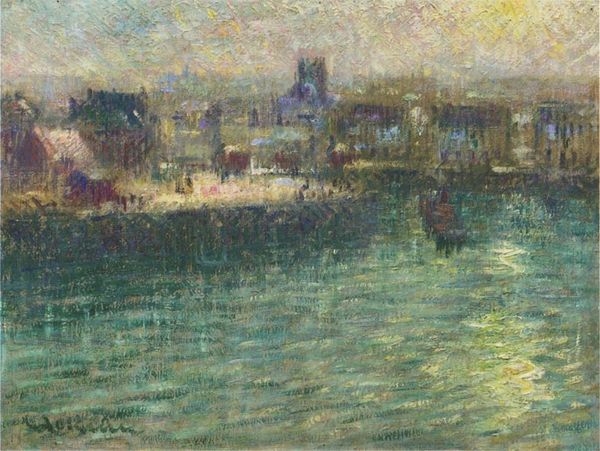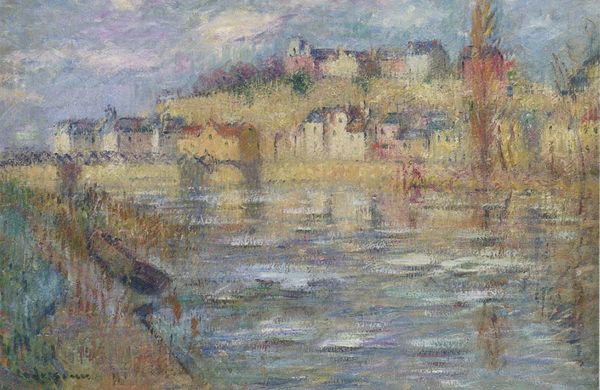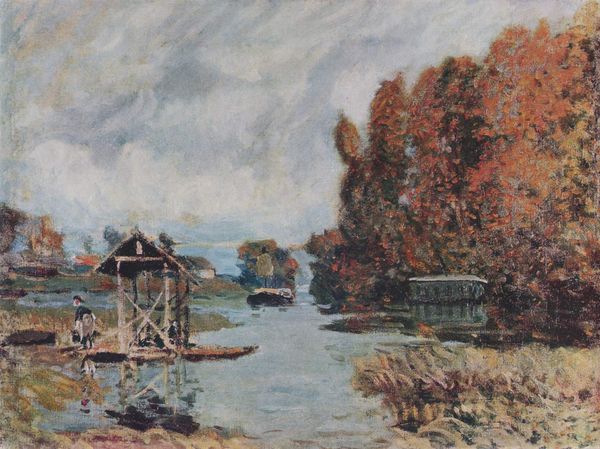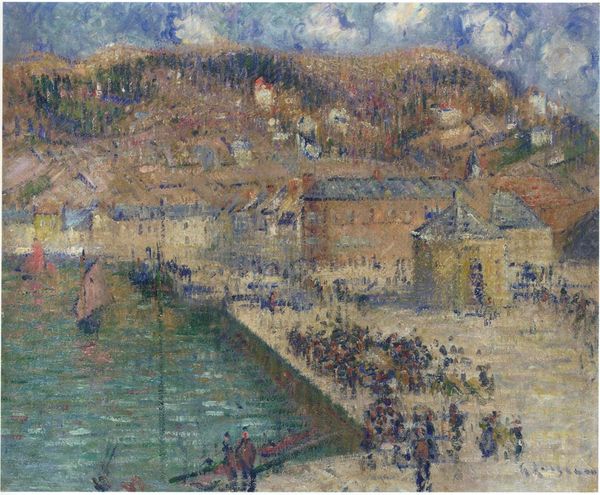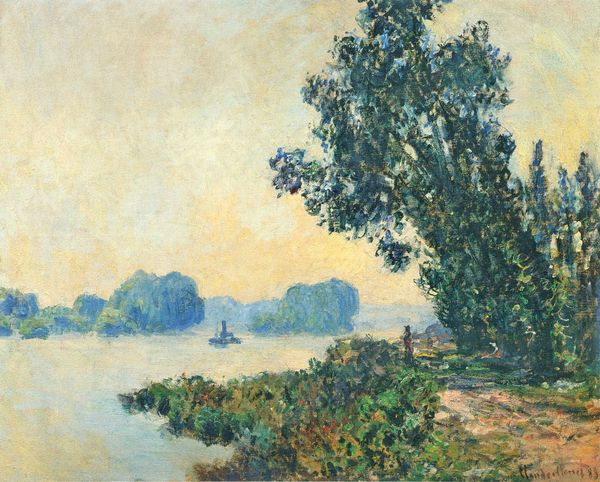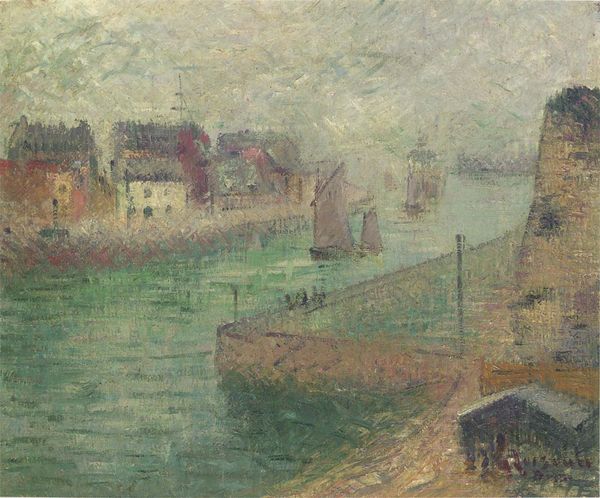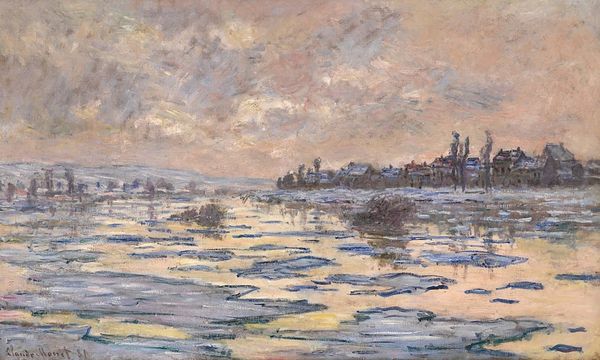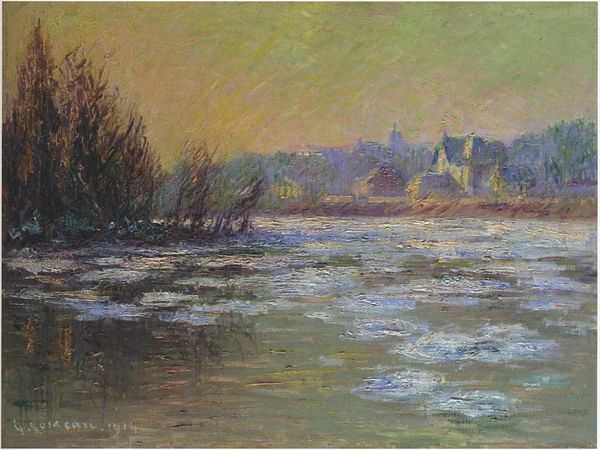
painting, plein-air, oil-paint
#
painting
#
impressionism
#
plein-air
#
oil-paint
#
landscape
#
oil painting
#
geometric
#
cityscape
Copyright: Public domain
Editor: Here we have Gustave Loiseau’s "Quay of the Hotel Deville in Paris," an oil painting done en plein-air in the Impressionist style. The brushstrokes feel so light, giving the buildings a hazy, almost dreamlike quality. How do you interpret this work in its historical context? Curator: The choice of subject matter itself tells a story. Cityscapes like this became popular as Paris underwent massive urban renewal. Loiseau, like many Impressionists, captures a specific moment in that rapidly changing urban fabric. This image represents the transformation but it is also selling this transformation to an art audience who had the ability to purchase and legitimize it. Who, do you think, got to enjoy that transformation and who was likely pushed aside for it to occur? Editor: That’s a really interesting point, the art seems celebratory, yet possibly naive? Considering the political implications of urban development. The composition places the viewer at a distance. Did that have an impact, socially or even politically? Curator: Precisely. The perspective suggests a comfortable distance. Loiseau’s rendering softens any potential social unrest or the grit of a working city. He focused on aesthetics, almost sidestepping deeper socio-political concerns and creates a very saleable commodity for private consumption. Think about the museums and galleries that first displayed and continue to display these images - who do those institutions benefit and how might that also be implicated in that narrative? Editor: So the beauty distracts from the underlying tensions within the cityscape, almost whitewashing any social commentary. Curator: Absolutely! It highlights how art can be both a reflection of and a participant in larger social forces. The beauty can normalize certain social conditions and power structures. This has really highlighted some interesting aspects! Editor: Yes, looking at this familiar painting through that lens makes me consider the role of the artist and how art institutions are influencing history.
Comments
No comments
Be the first to comment and join the conversation on the ultimate creative platform.
